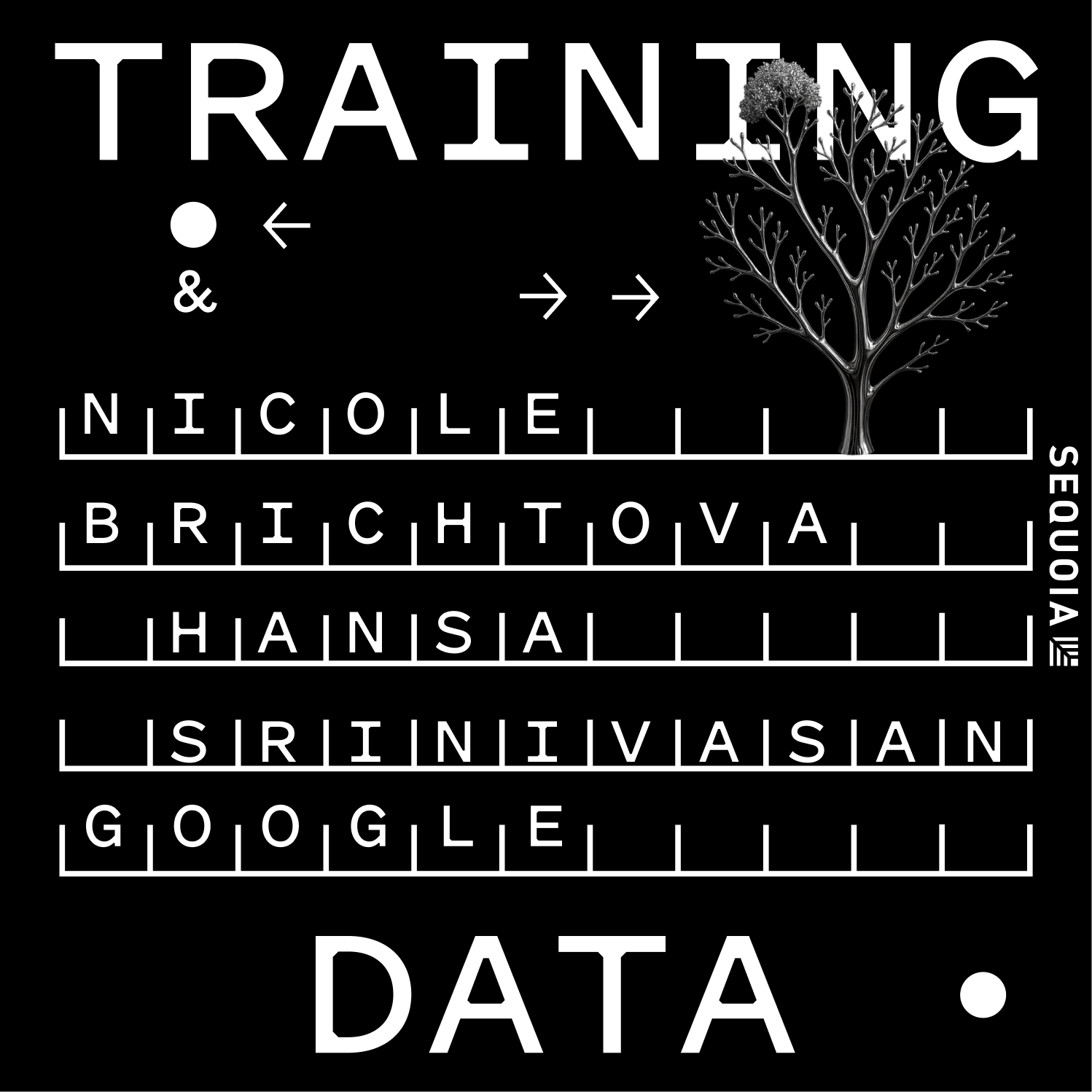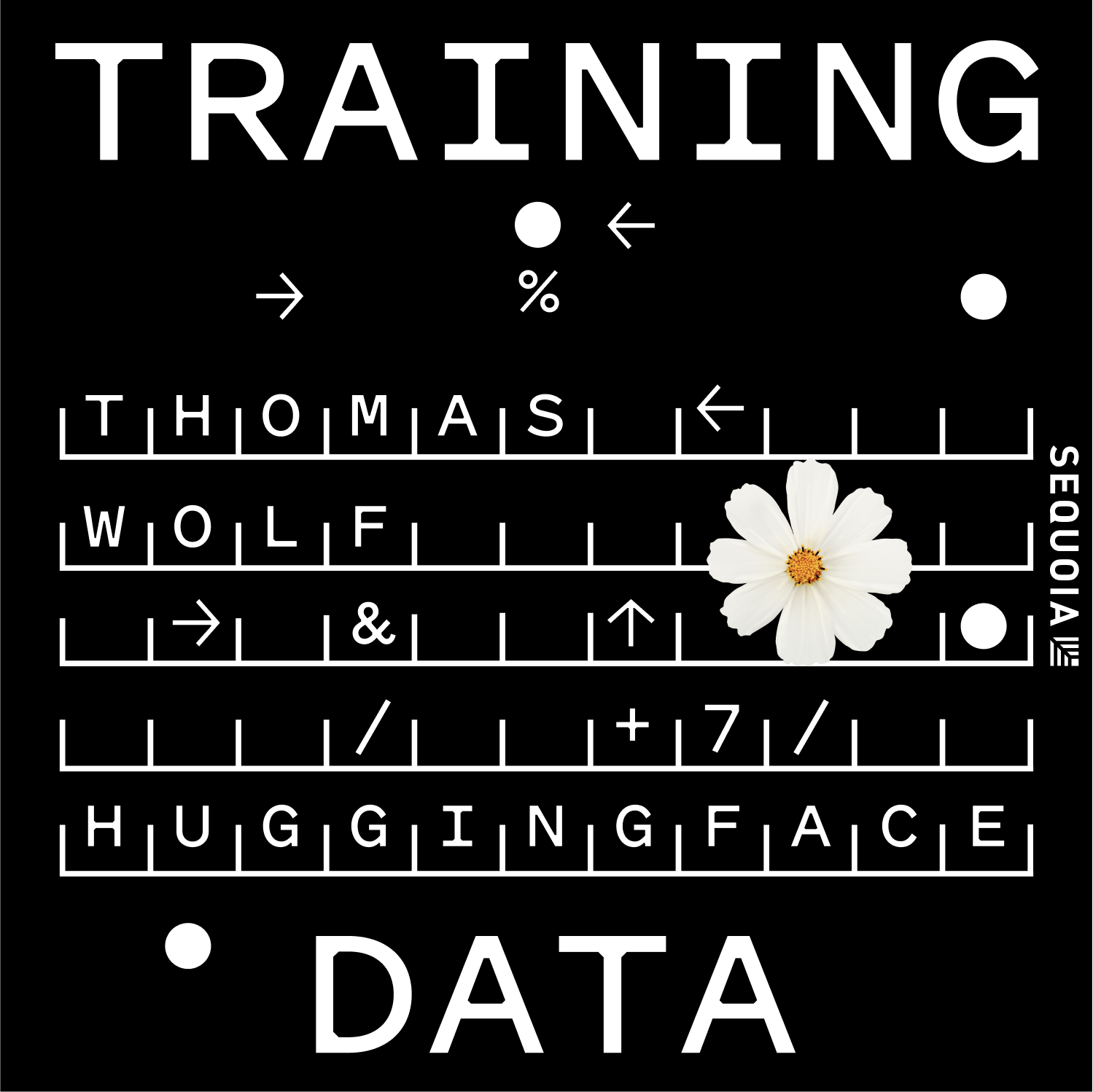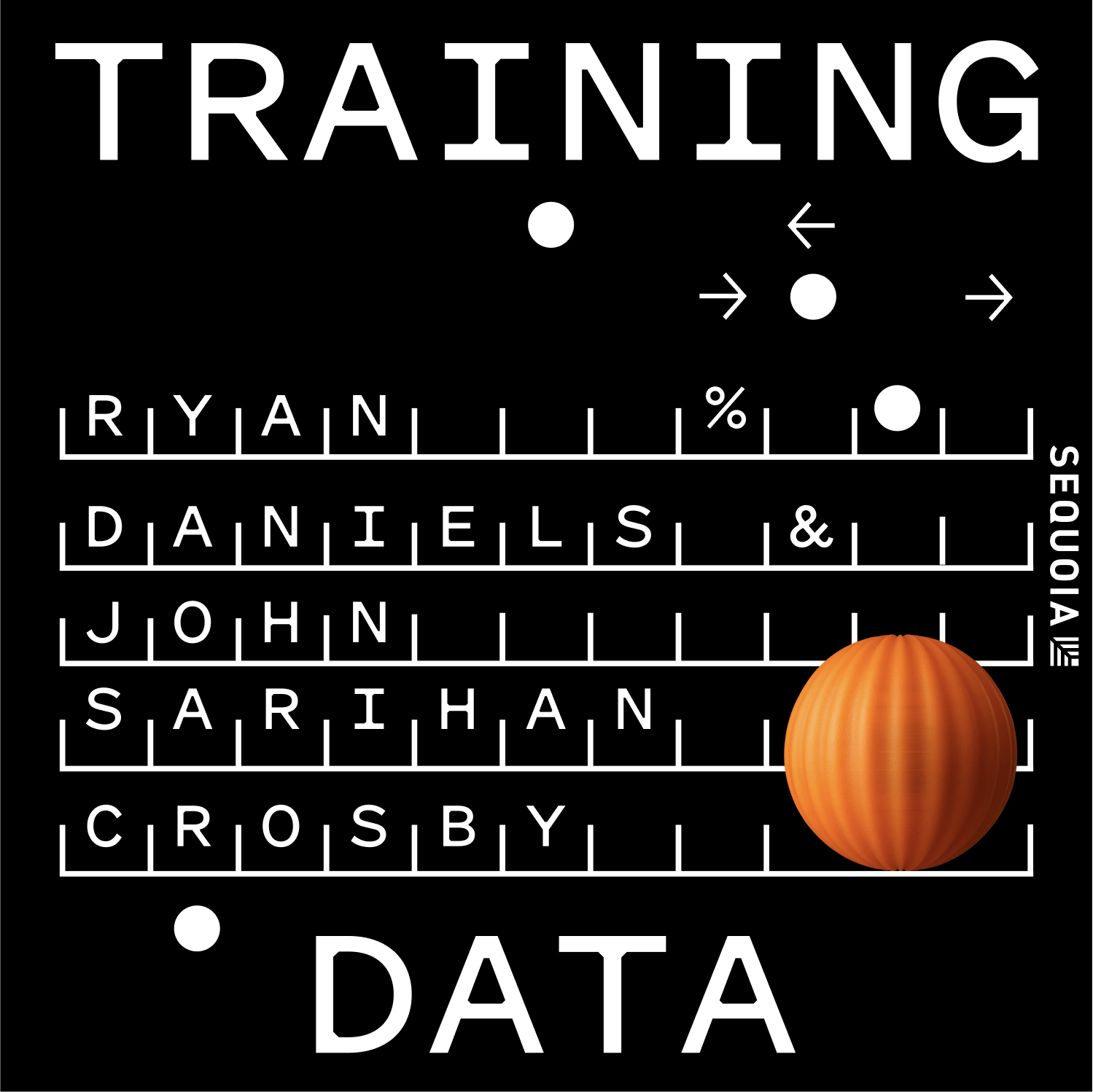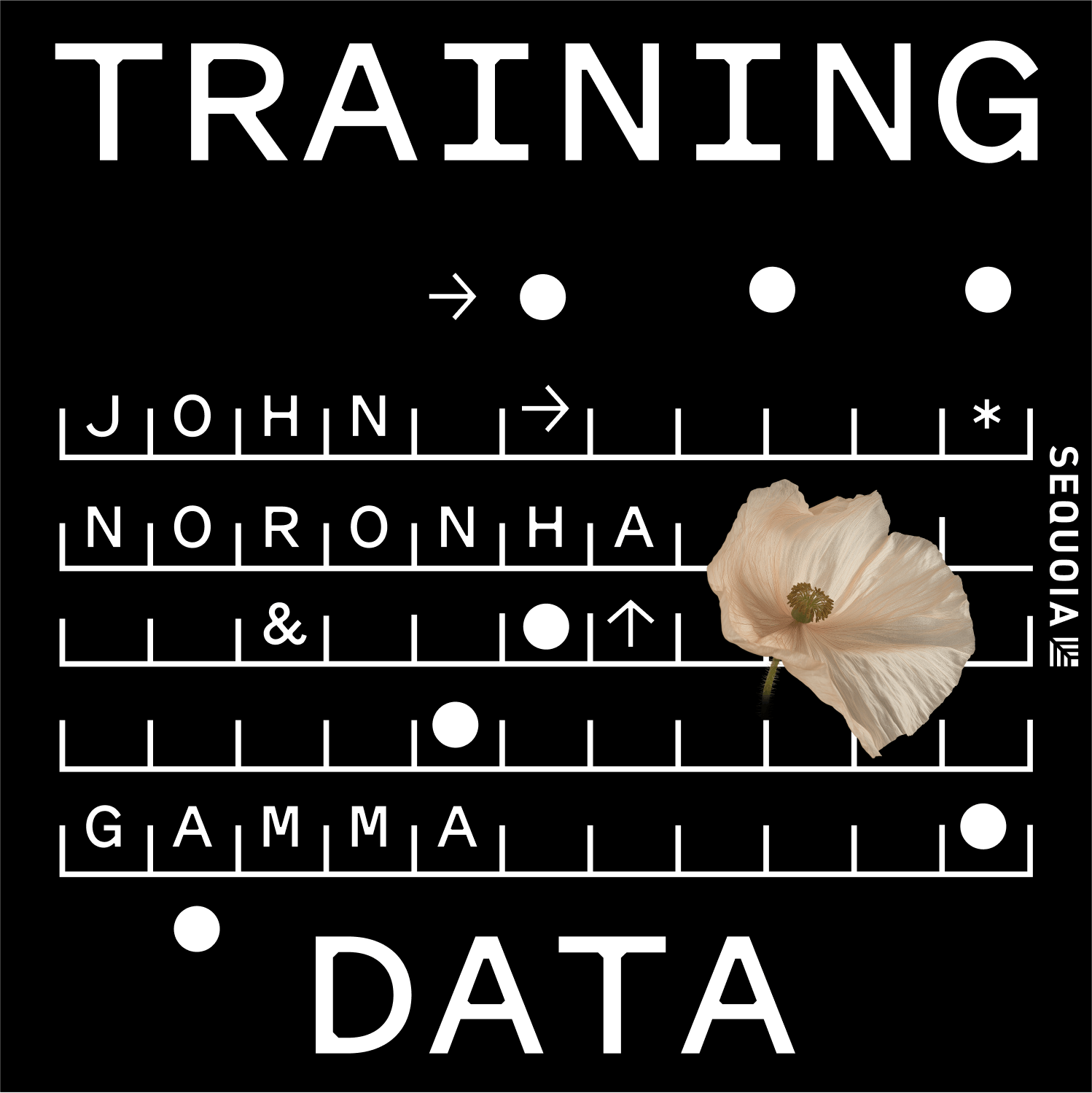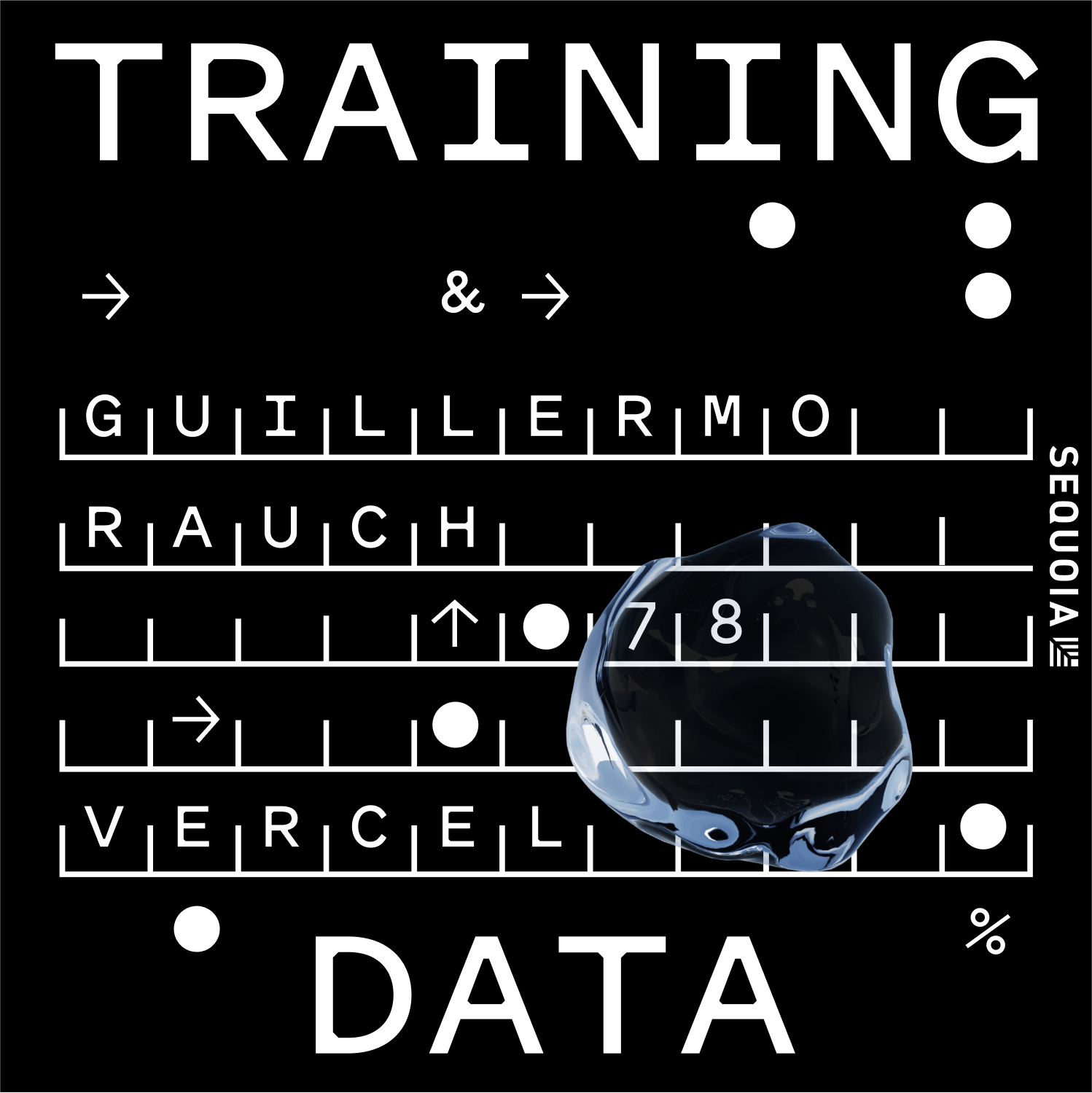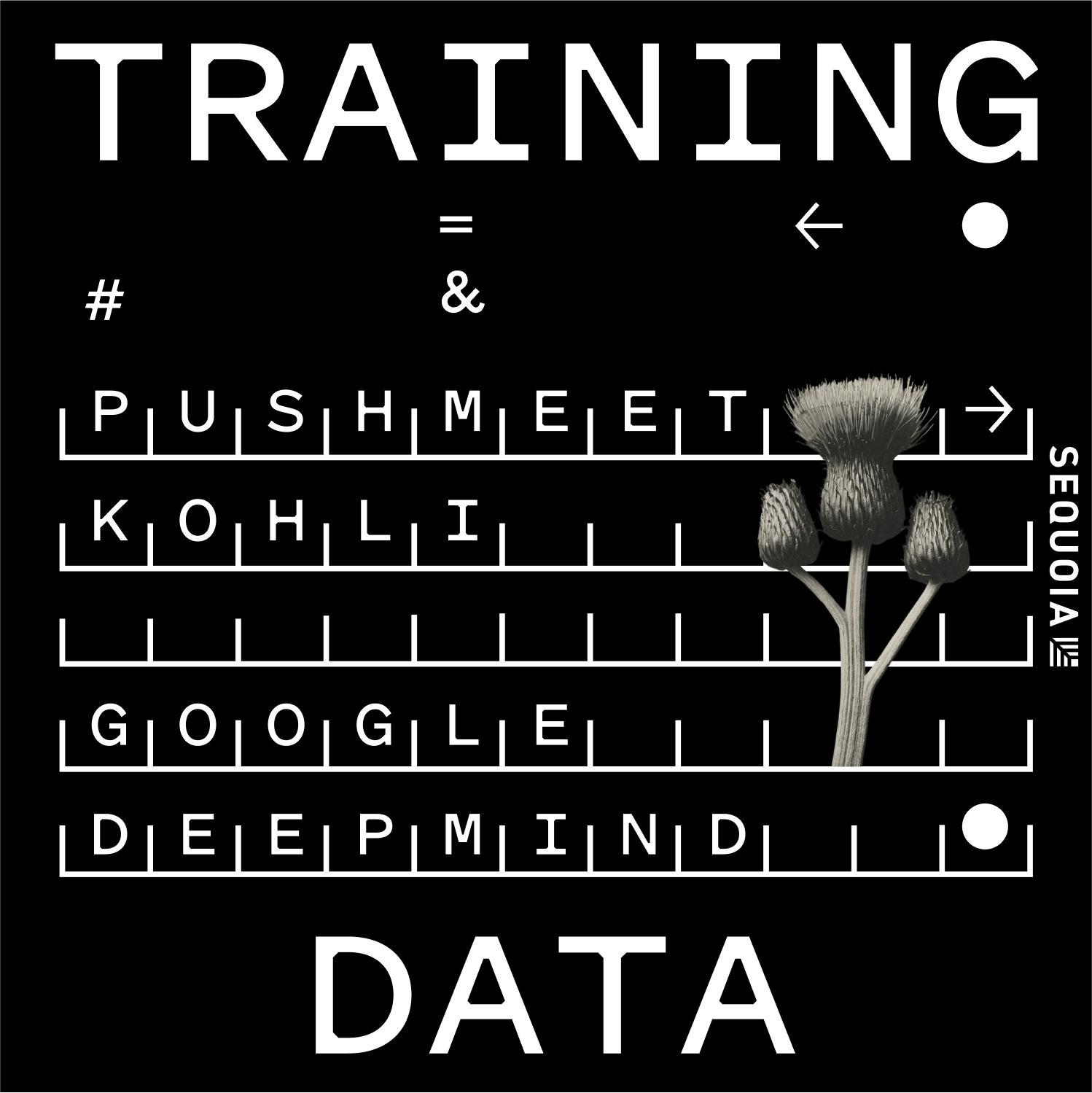Discover Training Data
Training Data

Training Data
Author: Sequoia Capital
Subscribed: 233Played: 3,691Subscribe
Share
Description
Join us as we train our neural nets on the theme of the century: AI. Sonya Huang, Pat Grady and more Sequoia Capital partners host conversations with leading AI builders and researchers to ask critical questions and develop a deeper understanding of the evolving technologies—and their implications for technology, business and society.
The content of this podcast does not constitute investment advice, an offer to provide investment advisory services, or an offer to sell or solicitation of an offer to buy an interest in any investment fund.
75 Episodes
Reverse
Sanjit Biswas is one of the rare founders who has scaled AI in the physical world – first with Meraki, and now with Samsara, a $20B+ public company with sensors deployed across millions of vehicles and job sites. Capturing 90 billion miles of driving data each year, Samsara operates at a scale matched only by a small handful of companies. Sanjit discusses why physical AI is fundamentally different from cloud-based AI, from running inference on two- to ten-watt edge devices to managing the messy diversity of real-world data—weather, road conditions, and the long tail of human behavior.
He also shares how advances in foundation models unlock new capabilities like video reasoning, why distributed compute at the edge still beats centralized data centers for many autonomy workloads, and how AI is beginning to coach frontline workers—not just detect risk, but recognize good driving and improve fuel efficiency. Sanjit also explains why connectivity, sensors, and compute were the original “why now” for Samsara, and how those compounding curves will reshape logistics, field service, construction, and every asset-heavy industry.
Hosted by Sonya Huang and Pat Grady, Sequoia Capital
fal is building the infrastructure layer for the generative media boom. In this episode, founders Gorkem Yurtseven, Burkay Gur, and Head of Engineering Batuhan Taskaya explain why video models present a completely different optimization problem than LLMs, one that is compute-bound, architecturally volatile, and changing every 30 days. They discuss how fal's tracing compiler, custom kernels, and globally distributed GPU fleet enable them to run more than 600 image and video models simultaneously, often faster than the labs that trained them. The team also shares what they’re seeing from the demand side: AI-native studios, personalized education, programmatic advertising, and early engagement from Hollywood. They argue that generative video is following a trajectory similar to early CGI—initial skepticism giving way to a new medium with its own workflows, aesthetics, and economic models.Hosted by Sonya Huang, Sequoia Capital
Nathan Sobo has spent nearly two decades pursuing one goal: building an IDE that combines the power of full-featured tools like JetBrains with the responsiveness of lightweight editors like Vim. After hitting the performance ceiling with web-based Atom, he founded Zed and rebuilt from scratch in Rust with GPU-accelerated rendering. Now with 170,000 active developers, Zed is positioned at the intersection of human and AI collaboration. Nathan discusses the Agent Client Protocol that makes Zed "Switzerland" for different AI coding agents, and his vision for fine-grained edit tracking that enables permanent, contextual conversations anchored directly to code—a collaborative layer that asynchronous git-based workflows can't provide. Nathan argues that despite terminal-based AI coding tools visual interfaces for code aren't going anywhere, and that source code is a language designed for humans to read, not just machines to execute.
Hosted by Sonya Huang and Pat Grady, Sequoia Capital
Alex Kendall founded Wayve in 2017 with a contrarian vision: replace the hand-engineered autonomous vehicle stack with end-to-end deep learning. While AV 1.0 companies relied on HD maps, LiDAR retrofits, and city-by-city deployments, Wayve built a generalization-first approach that can adapt to new vehicles and cities in weeks. Alex explains how world models enable reasoning in complex scenarios, why partnering with automotive OEMs creates a path to scale beyond robo-taxis, and how language integration opens up new product possibilities. From driving in 500 cities to deploying with manufacturers like Nissan, Wayve demonstrates how the same AI breakthroughs powering LLMs are transforming the physical economy.
Hosted by: Pat Grady and Sonya Huang
When Google launched Nano Banana, it instantly became a global phenomenon, introducing an image model that finally made it possible for people to see themselves in AI-generated worlds. In this episode, Nicole Brichtova and Hansa Srinivasan, the product and engineering leads behind Nano Banana, share the story behind the model’s creation and what it means for the future of visual AI.
Nicole and Hansa discuss how they achieved breakthrough character consistency, why human evaluation remains critical for models that aim to feel right, and how “fun” became a gateway to utility. They explain the craft behind Gemini’s multimodal design, the obsession with data quality that powered Nano Banana’s realism, and how user creativity continues to push the technology in unexpected directions—from personal storytelling to education and professional design. The conversation explores what comes next in visual AI, why accessibility and imagination must evolve together, and how the tools we build can help people capture not just reality but possibility.
Hosted by: Stephanie Zhan and Pat Grady, Sequoia Capital
The OpenAI Sora 2 team (Bill Peebles, Thomas Dimson, Rohan Sahai) discuss how they compressed filmmaking from months to days, enabling anyone to create compelling video. Bill, who invented the diffusion transformer that powers Sora and most video generation models, explains how space-time tokens enable object permanence and physics understanding in AI-generated video, and why Sora 2 represents a leap for video. Thomas and Rohan share how they're intentionally designing the Sora product against mindless scrolling, optimizing for creative inspiration, and building the infrastructure for IP holders to participate in a new creator economy. The conversation goes beyond video generation into the team’s vision for world simulators that could one day run scientific experiments, their perspective on co-evolving society alongside technology, and how digital simulations in alternate realities may become the future of knowledge work.
Hosted by: Konstantine Buhler and Sonya Huang, Sequoia Capital
Recorded live at Sequoia’s Europe100 event: Michael Kagan, co-founder of Mellanox and CTO of Nvidia, explains how the $7 billion Mellanox acquisition helped transform Nvidia from a chip company into the architect of AI infrastructure. Kagan breaks down the technical challenges of scaling from single GPUs to 100K and eventually million-GPU data centers. He reveals why network performance—not just compute power—determines AI system efficiency. He discusses the shift from training to inference workloads, and his vision for AI as humanity's "spaceship of the mind," and why he thinks AI may help us discover laws of physics we haven’t yet imagined.
Hosted by Sonya Huang and Pat Grady
Irregular co-founder Dan Lahav is redefining what cybersecurity means in the age of autonomous AI. Working closely with OpenAI, Anthropic, and Google DeepMind, Dan, co-founder Omer Nevo and team are pioneering “frontier AI security”—a proactive approach to safeguarding systems where AI models act as independent agents.
Dan shares how emergent behaviors, from models socially engineering each other to outmaneuvering real-world defenses like Windows Defender, signal a coming paradigm shift. Dan explains why tomorrow’s threats will come from AI-on-AI interactions, why anomaly detection will soon break down, and how governments and enterprises alike must rethink defenses from first principles as AI becomes a national security layer.
Hosted by: Sonya Huang and Dean Meyer, Sequoia Capital
00:00 Introduction
03:07 The Future of AI Security
03:55 Thought Experiment: Security in the Age of GPT-10
05:23 Economic Shifts and AI Interaction
07:13 Security in the Autonomous Age
08:50 AI Model Capabilities and Cybersecurity
11:08 Real-World AI Security Simulations
12:31 Working with AI Labs
32:34 Enterprise AI Security Strategies
40:03 Governmental AI Security Considerations
43:41 Final Thoughts
Ping Wu built Google's contact center business before becoming CEO of Cresta, where he's pioneering a unique approach to contact center transformation. Rather than full automation Ping advocates a dual approach, automating what's ready while using AI to assist humans with the rest. He makes the case for an abundance mindset—imagining new customer experiences like talking to airline apps or turning synchronous interactions asynchronous. Ping breaks down the technical challenges of deploying Contact Center AI at scale, from solving latency to orchestrating 20+ models in real-time. Sequoia’s Doug Leone shares his framework for building AI companies at speed and why he believes we're at the front end of an Industrial Revolution 2.0.
Hosted by: Sonya Huang and Doug Leone, Sequoia Capital
00:00 Introduction
01:13 The Evolution of Contact Centers
02:05 Debating AI's Impact on Call Centers
04:07 Challenges and Opportunities in Contact Centers
08:14 Technological Waves in Contact Centers
11:10 AI vs Human Agents: The Future
13:35 Customer Experience and AI
16:33 The Role of Data in AI Automation
19:05 Competing in the AI Space
22:34 Building a Company in the AI Era
24:05 Instilling Speed in AI Companies
24:53 Management Experience and Growth Challenges
26:01 Identifying Leadership Potential
26:37 Cresta's Leadership Transition
28:34 Future Goals for Cresta
29:56 AI Market Cycles and Investment
35:38 Cresta's Technical Stack
45:11 AI's Impact on Business Communication
As CTO of Block, Dhanji Prasanna has overseen a dramatic enterprise AI transformation, with engineers saving 8-10 hours a week through AI automation. Block’s open-source agent goose connects to existing enterprise tools through MCP, enabling everyone from engineers to sales teams to build custom applications without coding. Dhanji shares how Block reorganized from business unit silos to functional teams to accelerate AI adoption, why they chose to open-source their most valuable AI tool and why he believes swarms of smaller AI models will outperform monolithic LLMs.
Hosted by: Sonya Huang and Roelof Botha, Sequoia Capital
Mentioned in the episode:
goose: Block’s open-source, general-purpose AI agent used across the company to orchestrate workflows via tools and APIs.
Model Context Protocol (MCP): Open protocol (spearheaded by Anthropic) for connecting AI agents to tools; goose was an early adopter and helped shape.
bitchat: Decentralized chat app written by Jack Dorsey
Swarm intelligence: Research direction Dhanji highlights for AI’s future where many agents (geese) collaborate to build complex software beyond a single-agent copilot.
Travelling Salesman Problem: Classic optimization problem cited by Dhanji in the context of a non-technical user of goose solving a practical optimization task.
Amara’s Law: The idea, originated by futurist Roy Amara in 1978, that we overestimate tech impact short term and underestimate long term.
00:00 Introduction
01:48 AI: Friend or Foe?
03:13 Block's Journey with AI and Technology
04:47 Block's Diverse Product Range
07:04 Driving AI at Block
14:28 The Evolution of Goose
27:45 Integrating Goose with Existing Systems
28:23 Goose's Learning and Recipe Feature
29:41 Tool Use and LLM Providers
31:40 Impact of AI on Developer Productivity
34:37 Block's Commitment to Open Source
39:09 Future of AI and Swarm Intelligence
43:05 Remote Work at Block
45:15 Vibe Coding and AI in Development
48:43 Making Goose More Accessible
51:28 Generative AI in Customer-Facing Products
54:09 Design and Engineering at Block
55:38 Predictions for the Future of AI
Elias Torres has been building AI systems since 1999, from chatbots at IBM to co-founding Drift and now Agency. He believes businesses are caught in an expectation mismatch—demanding AI while rejecting it due to imperfection anxiety. Drawing from his experience scaling HubSpot, Elias explains why human-led customer experience doesn’t scale and how Agency is building AI-first solutions that work autonomously. His contrarian approach focuses on the back-end customer experience rather than front-end AI SDRs, aiming to “deprogram the entire business world” from inefficient human-dependent processes.
Hosted by: Sonya Huang and Pat Grady, Sequoia Capital
Mentioned in the episode:
Lookery: David Cancel’s first startup that Elias joined after IBM; shut down in 2009
Performable: Elias and David’s second startup, acquired by HubSpot in 2011
Drift: Elias and David Cancel’s third startup, merged with Salesloft in 2024
Klaviyo: B2C CRM company started by Andrew Bialecki after working with Elias at HubSpot
Secret: Short-lived anonymous messaging app that inspired one of Drift’s early iterations
Tatajuba: Kitesurfing destination in Jericoacoara, Brazil where Elias (briefly) considered retirement
00:00 Introduction
01:50 AI and Customer Expectations
03:36 Managing Emails with AI
07:21 Elias' Personal Journey
11:27 Early Career
14:28 Joining HubSpot and Scaling Challenges
16:31 Hiring Exceptional Talent
18:53 Founding Drift
20:27 Pivoting to Success with Drift
21:41 Drift's Chatbot Innovation
22:09 Challenges and Limitations of Drift
22:37 The Struggle with Customer Knowledge
23:09 Scaling Challenges and Lessons Learned
25:58 Rediscovering Purpose Post-Drift
28:55 The Birth of Agency
29:42 AI's Role in Customer Experience
35:13 Building a Sustainable Business Model
37:06 The Vision for Agency
38:22 Challenges and Opportunities with AI
41:22 Deprogramming and Embracing Change
43:23 Optimism for the AI Future
44:15 Closing Thoughts
Thomas Wolf, co-founder and Chief Science Officer of Hugging Face, explains how his company is applying the same community-driven approach that made transformers accessible to everyone to the emerging field of robotics. Thomas discusses LeRobot, Hugging Face's ambitious project to democratize robotics through open-source tools, datasets, and affordable hardware. He shares his vision for turning millions of software developers into roboticists, the challenges of data scarcity in robotics versus language models, and why he believes we're at the same inflection point for physical AI that we were for LLMs just a few years ago.
Hosted by: Sonya Huang and Pat Grady, Sequoia Capital
Ryan Daniels and John Sarihan are reimagining legal services by building Crosby, an AI-powered law firm that focuses on contract negotiations to start. Rather than building legal software, they've structured their company as an actual law firm with lawyers and AI engineers working side-by-side to automate human negotiations. They've eliminated billable hours in favor of per-document pricing, achieving contract turnaround times under an hour. Ryan and John explain why the law firm structure enables faster innovation cycles, how they're using AI to predict negotiation outcomes, and their vision for agents that can simulate entire contract negotiations between parties.
Hosted by Josephine Chen, Sequoia Capital
Mentioned in this episode:
Data processing agreement (DPA): GDPR-mandated contract between controllers and processors. Crosby handles DPAs as part of B2B contracting.
Credence good: Economic term for services whose quality is hard to judge even after consumption. Used to explain why legal buyers value lawyers-in-the-loop and malpractice coverage.
When the AI wave hit, n8n founder Jan Oberhauser faced a critical choice: become irrelevant or become indispensable. He chose the latter, transforming n8n from a simple workflow tool into a comprehensive AI automation platform that lets users connect any LLM to any application. The result? Four times the revenue growth in eight months compared to the previous six years. Jan explains how n8n’s “connect everything to anything” philosophy, combined with a thriving open source community, positioned the company to ride the AI automation wave while avoiding vendor lock-in that plagues enterprise software.
Hosted by George Robson and Pat Grady, Sequoia Capital
Mentioned in this episode:
Model Context Protocol (MCP): Open protocol that lets AI models safely use external tools and data that is used extensively by n8n for orchestration.
Vector database: A database optimized for storing and searching embeddings. These “vector stores” can pair with LLMs for retrieval-augmented workflows.
Granola: AI productivity tool mentioned by Jan as a recent favorite.
Her: A film that Jan says, “a few years ago, it was sci fi, and it’s now suddenly this thing that is just around the corner.”
Before ChatGPT made AI mainstream, John Noronha was building Gamma with a simple insight: everyone hates making slides but needs visual communication for high-stakes ideas. His background at Optimizely proved crucial as Gamma became a testing laboratory for AI models, running hundreds of experiments to discover that Claude excels at creative taste, Gemini wins on cost efficiency, and reasoning models actually hurt creativity. John explains how solving their own blank page problem inadvertently solved it for millions of users, turning a near-failing startup into a cash flow positive platform with 250 million presentations created. He discusses competing with PowerPoint's 500 million users while expanding beyond slides into documents, websites and visual storytelling.
Hosted by Sonya Huang, Sequoia Capital
Dara Ladjevardian, founder and CEO of Delphi, is creating digital minds that allow people to scale their thoughts and availability without replacing human connection. Inspired by Ray Kurzweil’s theory of mind as a hierarchy of pattern recognizers, Dara built an adaptive temporal knowledge graph that captures how people think and reason. From helping CEOs train new hires to enabling coaches to monetize their expertise 24/7, Delphi represents a new form of conversational media. Dara explains why authentic human representation matters, how digital minds actually increase desire for real human connection, and why he believes 2026 will be the tipping point for adoption for digital minds.
Hosted by Sonya Huang and Jess Lee, Sequoia Capital
Mentioned in this episode:
How to Create a Mind: 2012 book by Ray Kurzweil that inspired Dara
The Memoirs of Akbar Ladjevardian: 2008 book about Dara’s grandfather, an Iranian industrialist, that led him to create his first “digital mind”
Build: 2022 book by Tony Fadell that refers to itself as “a mentor in a box”; another inspiration for Dara
The 2 Sigma Problem: 1984 paper by Benjamin Bloom about how students that receive one-on-one tutoring perform two standard deviations better than students educated in a classroom environment
Vercel CEO Guillermo Rauch has spent years obsessing over reducing the friction between having an idea and getting it online. Now with AI, he's achieving something even more ambitious: making software creation accessible to anyone with a keyboard. Guillermo explains how v0 has grown to 3 million users by focusing on reliability and quality, why ChatGPT has become their fastest-growing customer acquisition channel, and how AI is enabling “virtual coworkers” across design, development, and marketing. He shares his contrarian view that the future belongs to ephemeral, generated-on-demand applications rather than traditional installed software, and why he believes we're on the cusp of the biggest transformation to the web in its history.
Hosted by Sonya Huang and Pat Grady, Sequoia Capital
In just two months, a scrappy three-person team at OpenAI sprinted to fulfill what the entire AI field has been chasing for years—gold-level performance on the International Mathematical Olympiad problems. Alex Wei, Sheryl Hsu and Noam Brown discuss their unique approach using general-purpose reinforcement learning techniques on hard-to-verify tasks rather than formal verification tools. The model showed surprising self-awareness by admitting it couldn’t solve problem six, and revealed the humbling gap between solving competition problems and genuine mathematical research breakthroughs.
Hosted by Sonya Huang, Sequoia Capital
Isa Fulford, Casey Chu, and Edward Sun from OpenAI's ChatGPT agent team reveal how they combined Deep Research and Operator into a single, powerful AI agent that can perform complex, multi-step tasks lasting up to an hour. By giving the model access to a virtual computer with text browsing, visual browsing, terminal access, and API integrations—all with shared state—they've created what may be the first truly embodied AI assistant. The team discusses their reinforcement learning approach, safety mitigations for real-world actions, and how small teams can build transformative AI products through close research-applied collaboration.
Hosted by Sonya Huang and Lauren Reeder, Sequoia Capital
Pushmeet Kohli leads AI for Science at DeepMind, where his team has created AlphaEvolve, an AI system that discovers entirely new algorithms and proves mathematical results that have eluded researchers for decades. From improving 50-year-old matrix multiplication algorithms to generating interpretable code for complex problems like data center scheduling, AlphaEvolve represents a new paradigm where LLMs coupled with evolutionary search can outperform human experts. Pushmeet explains the technical architecture behind these breakthroughs and shares insights from collaborations with mathematicians like Terence Tao, while discussing how AI is accelerating scientific discovery across domains from chip design to materials science.
Hosted by Sonya Huang and Pat Grady, Sequoia Capital






